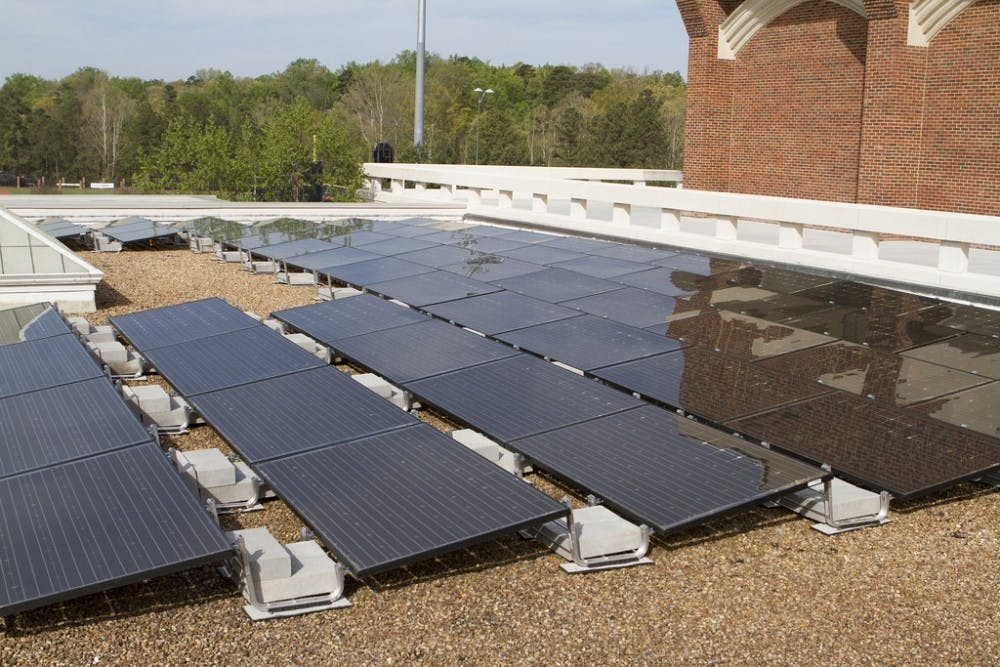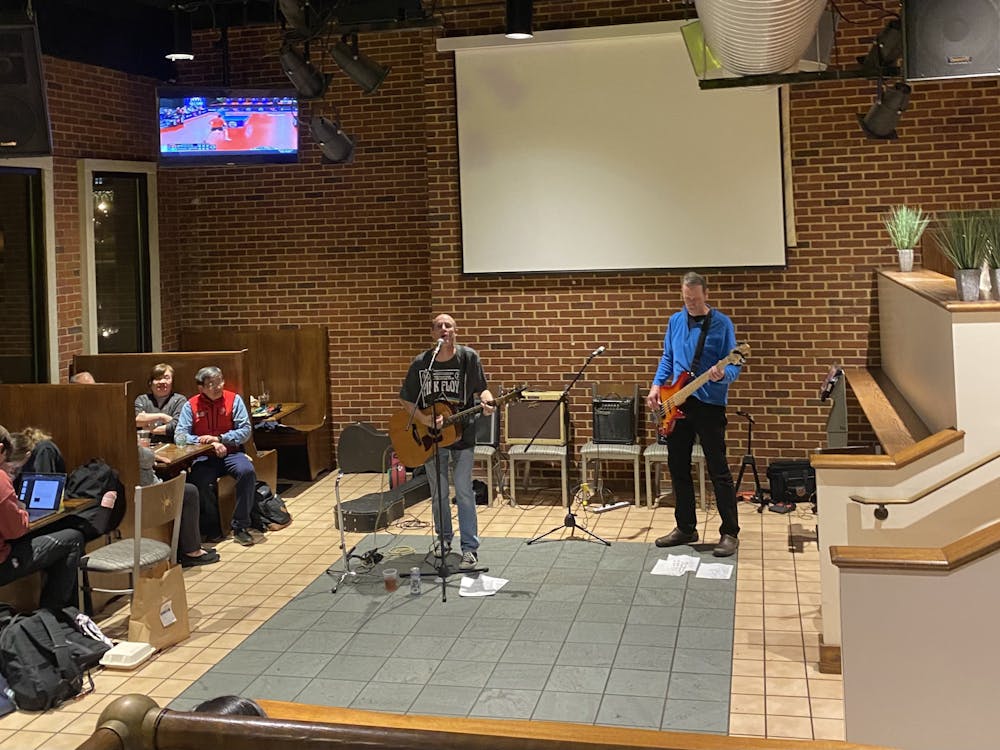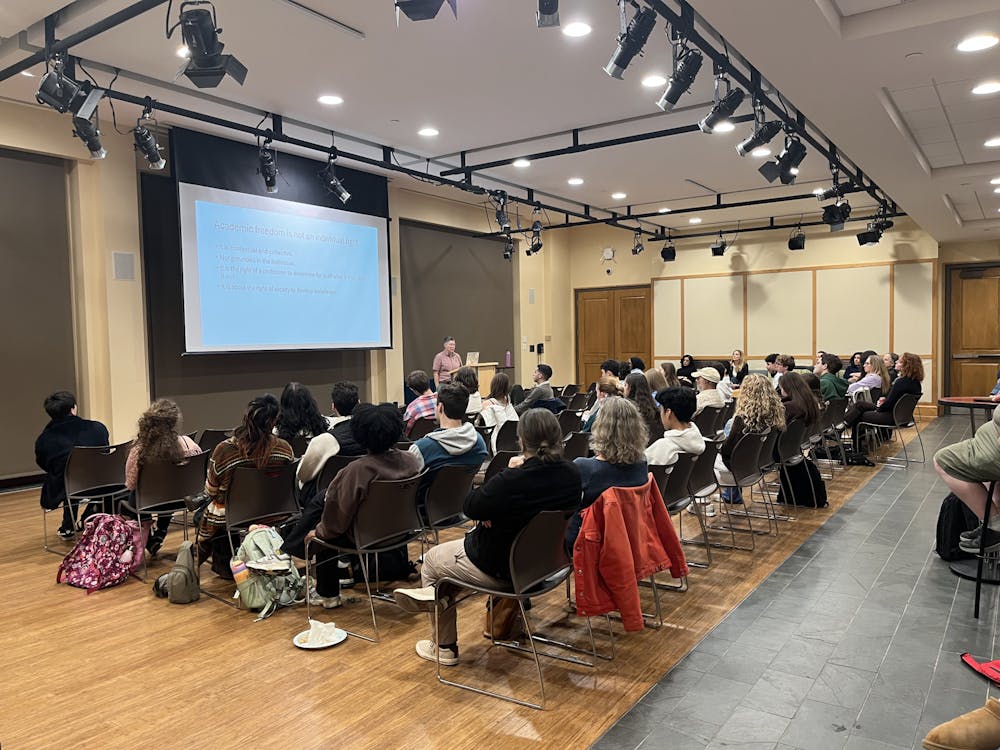University of Richmond announced a new partnership with solar energy company sPower, the largest private owner of solar assets in the United States in August.
This marks the first solar power purchase agreement (PPA) between sPower and a higher education institution. This is the company’s first project in Virginia, and the developers of the project at sPower said they hoped to do more projects in the state after this one.
The PPA entails a promise that sPower will match 100% of the university’s electrical use with solar power. For every megawatt-hour of electricity that UR uses (a mix of fossil fuel, coal, nuclear and 5 percent renewable sources from Dominion Virginia Power, according to dominionenergy.com), sPower will supply the same amount of energy into the grid that feeds nearby Spotsylvania County, neutralizing the university's carbon footprint, said Rob Andrejewski, director of sustainability.
To reach this goal, sPower has set its resources on constructing a 130-acre solar farm with the capacity to provide 41,000 megawatt-hours of energy annually, Taylor Keeney, a spokeswoman for the company, said in an email. Part of this facility will provide 20 megawatts of energy to “Spider Solar,” a nickname given to the project in honor of the UR mascot.
The farm will be 50 miles from campus and is expected to neutralize 19,720 metric tons of carbon each year, beginning in 2020, Keeney said.
Before 2013, corporations, including UR, could not purchase retail energy from any group aside from state-designated companies – in this case, Dominion Virginia Power. UR was a vocal supporter of the Virginia General Assembly legislation to allow a pilot program of alternative energy usage under Dominion’s territory, Andrejewski said.
UR began its first project, a PPA with Secure Futures, which led to the construction of a 204-kilowatt solar photovoltaic array of panels on the flat roof of the Weinstein Center for Recreation and Wellness. This array has the capacity to power 21.5 residential homes, roughly equivalent to the energy use of a campus residence hall, according to the university’s 2015 press release on the project.
Since beginning the journey toward carbon neutrality, UR has reduced its energy usage by 25 percent in comparison with 2009 figures, the chosen baseline, according to the UR Greenhouse Gas Emissions Inventory. According to the university's media release, the new development will bring the university to emission levels 60 percent lower than in 2009.
Financially, the agreement brings fixed-rate pricing to much of UR’s energy purchasing as well as an increased opportunity to anticipate energy costs. As the cost of solar energy rises during future decades, the university will have the advantage of paying 2018 prices, Andrejewski said.
Mike Ashley serves as the director of origination at sPower and secured this arrangement. He said in an email that he had been contacted by Edison Energy, an energy consultant firm that aided the University of Richmond in brokering a deal. Edison Energy put forth a proposal that was then accepted by the university. Following negotiations, the transaction was successful, Ashley said.
Daniel Menahem serves as senior manager of solar development at sPower and leads the company’s Virginia Solar Portfolio.
“The deal allows us to be ‘pioneers’ in the industry, looking to break new ground and provide new opportunities for companies to get involved in renewable energy where they might not have otherwise,” Menahem said in an email.
Enjoy what you're reading?
Signup for our newsletter
Menahem estimated the project would bring roughly 700 to 1000 construction jobs and 25 to 30 full-time jobs to Spotsylvania County during regular operation.
In addition to this broader community benefit, Keeney stressed the importance of providing the UR student body with plentiful academic and extracurricular resources – spanning from internships at the company's new Richmond office to lecturing opportunities, informational sessions and an informative kiosk regarding the project, Menahem said in an email.
“sPower is excited to partner with the University of Richmond and help the school reach its long-term renewable energy goals," Keeney said in an email. "Our partnership goes beyond providing energy, and will include educational programming, internships and career opportunities for students. We are looking forward to truly becoming a part of the Richmond community.”
Contact news writer Isabella Dumitrescu at isabella.dumitrescu@richmond.edu.
Support independent student media
You can make a tax-deductible donation by clicking the button below, which takes you to our secure PayPal account. The page is set up to receive contributions in whatever amount you designate. We look forward to using the money we raise to further our mission of providing honest and accurate information to students, faculty, staff, alumni and others in the general public.
Donate Now



